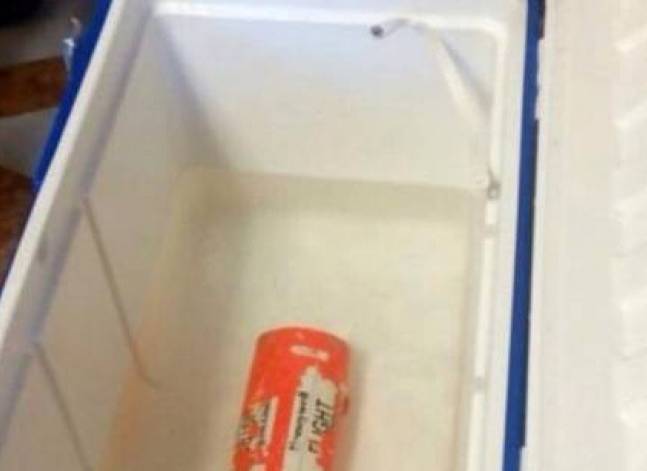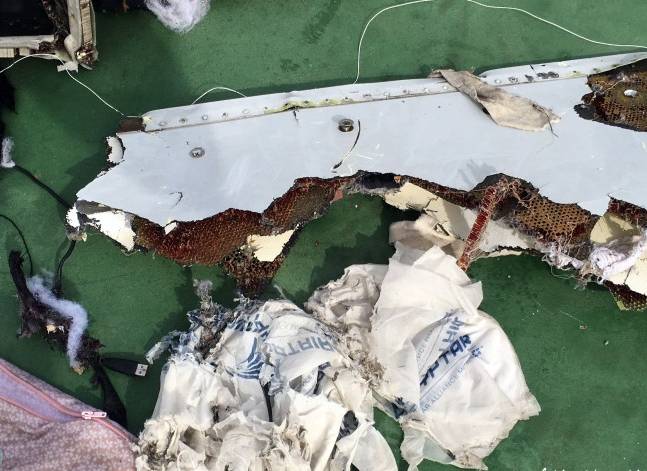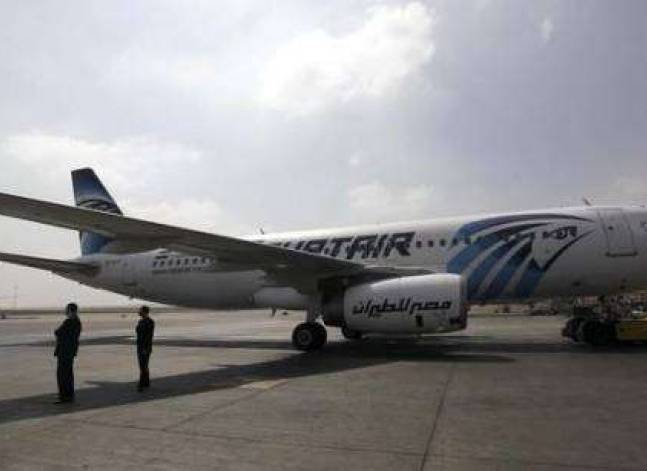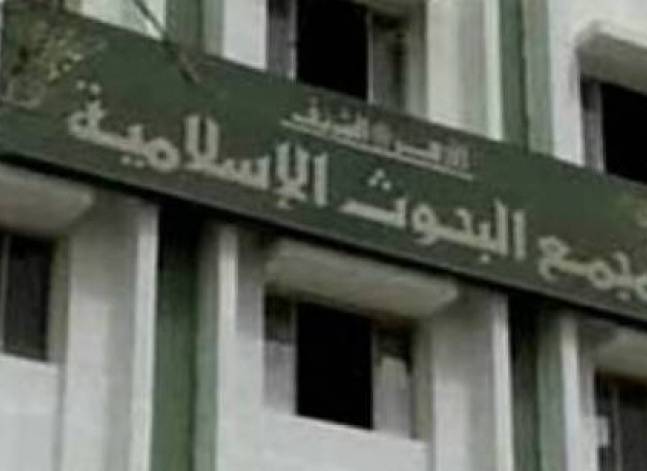Latest NEWS
- Aswat Masriya, the last word
- Roundup of Egypt's press headlines on March 15, 2017
- Roundup of Egypt's press headlines on March 14, 2017
- Former Egyptian President Hosni Mubarak to be released: lawyer
- Roundup of Egypt's press headlines on March 13, 2017
- Egypt's capital set to grow by half a million in 2017
- Egypt's wheat reserves to double with start of harvest -supply min
- Roundup of Egypt's press headlines on March 12, 2017
Investigators divided on presence of TNT traces on EgyptAir flight debris - Le Figaro
Handout photo released by Egypt's military on May 22, 2016 shows debris of the EgyptAir jet that plunged into the Mediterranean Sea on May 19, 2016.
CAIRO, Sept 17 (Aswat Masriya) - Sources within the Egypt-led committee investigating the crash of the EgyptAir flight last May denied on Saturday reports on preventing French investigators from examining TNT traces believed to have been found on the debris.
The statements came in response to a report by French newspaper Le Figaro, citing a source close to the investigation, saying that French investigators from the criminal research institute noticed the presence of TNT traces on the flight's debris but Egyptian judicial authorities did not allow them to examine it in detail.
The passenger flight crashed into the Mediterranean about 280 km off the Egyptian seacoast en route from Paris to Cairo. It was carrying 66 people on board.
The flight lost contact with radar as it was crossing the Mediterranean about 280 km from the Egyptian seacoast at 02:30 am Cairo local time, about 45 minutes before its scheduled arrival at Cairo airport.
Egyptian sources told Aswat Masriya that "none of the investigators were prevented from participating in the investigations," adding that the committee is still studying and analysing the data extracted from the flight's black boxes which proved the presence of a fire on board.
Last July, the committee said that data retrieved from the cockpit voice recorder (CVR) indicates a fire, adding that it was "too early" to determine its reason or the location where it started.
The data retrieved from flight data recorder (FDR) in June also showed consistency with ACARS messages of lavatory smoke and avionics smoke," said the investigation committee in reference to Aircraft Communications Addressing and Reporting System which allows aircrafts to communicate with ground stations during flight.
According to Reuters, the plane had sent a series of warnings indicating that smoke had been detected on board through ACARS.
Some of the recovered wreckage of the front section of the aircraft showed signs of high temperature damage and soot, accordingly analysis will be carried out to find out the source of those signs, said the committee.















